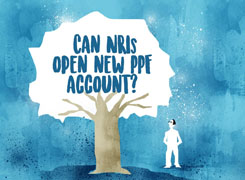As a 30-year-old with maxed-out 80C, will my NPS be taxable?
Ramalingam Kalirajan |10872 Answers |Ask -Follow
Mutual Funds, Financial Planning Expert - Answered on Jul 17, 2024
He has an MBA in finance from the University of Madras and is a certified financial planner.
He is the director and chief financial planner at Holistic Investment, a Chennai-based firm that offers financial planning and wealth management advice.... more

Hello sir, My current epf is 10k monthly and 30k annually in ppf. Thus cealing my 80c to 1.5lakhs. I am thinking of starting an NPS of 10k as well for my retirement. Will this 10k of nps be taxable as as i have already capped my 80c i know i have 50k more deductable in 80ccd for nps. But since total will be 120k annually thus wanted to understand if these will be taxable? And will it effect my return after 30 years. As of now i am 30 years old
Considering NPS Contribution
You plan to start contributing Rs 10,000 monthly to NPS for retirement. This would amount to Rs 1.2 lakhs annually.
Tax Implications
Section 80C and 80CCD
Your contributions under Section 80C are already maxed out at Rs 1.5 lakhs. However, Section 80CCD(1B) allows an additional Rs 50,000 deduction specifically for NPS contributions.
Taxability of NPS Contribution
The Rs 1.2 lakhs NPS contribution is partly deductible. Rs 50,000 can be claimed under Section 80CCD(1B). The remaining Rs 70,000 will be taxable.
Effect on Return
Long-Term Growth Potential
NPS has a mix of equity and debt investments. This helps in balanced growth. Over 30 years, NPS can grow significantly due to compounding.
Withdrawal Rules
At retirement, 60% of NPS corpus is tax-free. The remaining 40% must be used to purchase an annuity. The annuity income is taxable.
Advantages of NPS
Additional Tax Benefits
NPS offers an extra Rs 50,000 deduction under Section 80CCD(1B). This is over and above the Rs 1.5 lakhs under Section 80C.
Long-Term Growth
NPS investments benefit from compounding. The mix of equity and debt can provide balanced returns.
Retirement Security
NPS provides a steady income post-retirement through annuities.
Disadvantages of NPS
Taxability of Annuity
The annuity income from NPS is taxable. This can reduce your net returns in retirement.
Withdrawal Restrictions
NPS has strict withdrawal rules. Partial withdrawals are allowed only for specific purposes before retirement.
Final Insights
Your current EPF and PPF contributions maximize Section 80C benefits. Starting an NPS contribution of Rs 10,000 monthly is a good idea. You get an additional Rs 50,000 deduction under Section 80CCD(1B). However, the remaining Rs 70,000 will be taxable. NPS has long-term growth potential but comes with some tax implications. Plan your investments considering both the benefits and restrictions of NPS.
Best Regards,
K. Ramalingam, MBA, CFP
Chief Financial Planner
www.holisticinvestment.in
You may like to see similar questions and answers below
Mihir Tanna |1090 Answers |Ask -Follow
Tax Expert - Answered on Sep 22, 2022
Mihir Tanna |1090 Answers |Ask -Follow
Tax Expert - Answered on Feb 16, 2023
Ramalingam Kalirajan |10872 Answers |Ask -Follow
Mutual Funds, Financial Planning Expert - Answered on May 02, 2024
Ramalingam Kalirajan |10872 Answers |Ask -Follow
Mutual Funds, Financial Planning Expert - Answered on Oct 07, 2024
Radheshyam Zanwar |6735 Answers |Ask -Follow
MHT-CET, IIT-JEE, NEET-UG Expert - Answered on Dec 06, 2025
Dr Nagarajan J S K |2576 Answers |Ask -Follow
NEET, Medical, Pharmacy Careers - Answered on Dec 06, 2025
Mihir Tanna |1090 Answers |Ask -Follow
Tax Expert - Answered on Dec 06, 2025
Ramalingam Kalirajan |10872 Answers |Ask -Follow
Mutual Funds, Financial Planning Expert - Answered on Dec 06, 2025
Radheshyam Zanwar |6735 Answers |Ask -Follow
MHT-CET, IIT-JEE, NEET-UG Expert - Answered on Dec 06, 2025
Radheshyam Zanwar |6735 Answers |Ask -Follow
MHT-CET, IIT-JEE, NEET-UG Expert - Answered on Dec 06, 2025
Radheshyam Zanwar |6735 Answers |Ask -Follow
MHT-CET, IIT-JEE, NEET-UG Expert - Answered on Dec 06, 2025
Dr Dipankar Dutta |1837 Answers |Ask -Follow
Tech Careers and Skill Development Expert - Answered on Dec 05, 2025
Dr Shyam Jamalabad |108 Answers |Ask -Follow
Dentist - Answered on Dec 05, 2025
Dr Shyam Jamalabad |108 Answers |Ask -Follow
Dentist - Answered on Dec 05, 2025

























